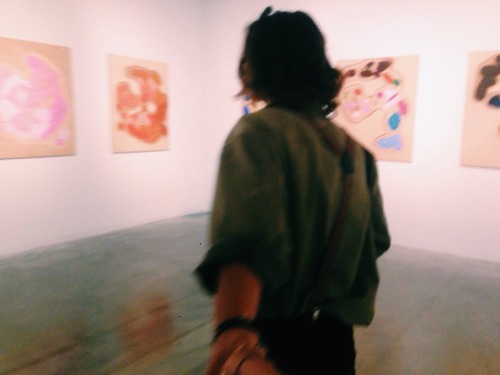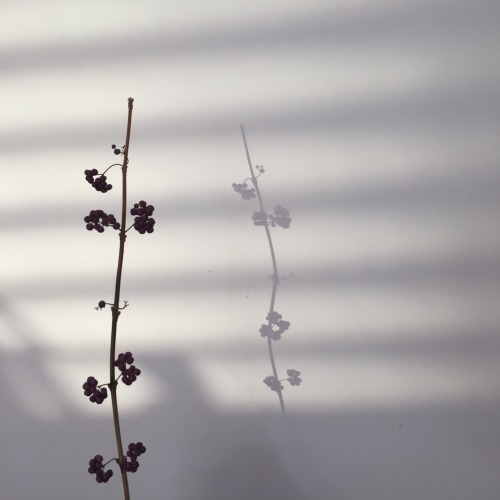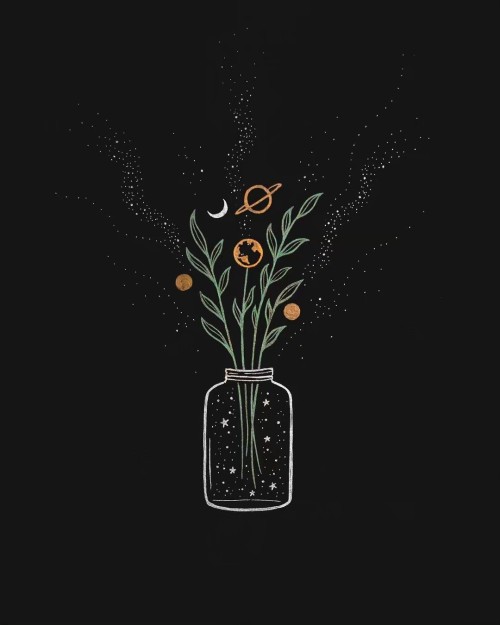Revesmecaniques - LOIN D'ICI

More Posts from Revesmecaniques and Others



I hope you see things that startle you. I hope you feel things you never felt before. I hope you meet people with a different point of view. I hope you live a life you`re proud of, and if you find that you`re not, I hope you find the strength to start all over again.
The Curious Case of Benjamin Button (2008), Dir. David Fincher (via wnq-movies)






Universe
Via: @ameyasrealm [instagram]
Take action, no matter how frightened you are.
-stutz

(by the air in the branches)
Why Do Some Galactic Unions Lead to Doom?

Three images from our Spitzer Space Telescope show pairs of galaxies on the cusp of cosmic consolidations. Though the galaxies appear separate now, gravity is pulling them together, and soon they will combine to form new, merged galaxies. Some merged galaxies will experience billions of years of growth. For others, however, the merger will kick off processes that eventually halt star formation, dooming the galaxies.

Only a few percent of galaxies in the nearby universe are merging, but galaxy mergers were more common between 6 billion and 10 billion years ago, and these processes profoundly shaped our modern galactic landscape. Scientists study nearby galaxy mergers and use them as local laboratories for that earlier period in the universe’s history. The survey has focused on 200 nearby objects, including many galaxies in various stages of merging.

Merging galaxies in the nearby universe appear especially bright to infrared observatories like Spitzer. In these images, different colors correspond to different wavelengths of infrared light, which are not visible to the human eye. Blue corresponds to 3.6 microns, and green corresponds to 4.5 microns - both strongly emitted by stars. Red corresponds to 8.0 microns, a wavelength mostly emitted by dust.
Read more: https://go.nasa.gov/2VioFB0.
Make sure to follow us on Tumblr for your regular dose of space: http://nasa.tumblr.com


-
 gamora22 reblogged this · 2 weeks ago
gamora22 reblogged this · 2 weeks ago -
 justbeyourselfsstuff liked this · 3 weeks ago
justbeyourselfsstuff liked this · 3 weeks ago -
 clv liked this · 4 weeks ago
clv liked this · 4 weeks ago -
 selensimss liked this · 1 month ago
selensimss liked this · 1 month ago -
 abjectiion liked this · 1 month ago
abjectiion liked this · 1 month ago -
 lets-fly-home reblogged this · 2 months ago
lets-fly-home reblogged this · 2 months ago -
 maracuchix reblogged this · 3 months ago
maracuchix reblogged this · 3 months ago -
 persephone-sighed reblogged this · 3 months ago
persephone-sighed reblogged this · 3 months ago -
 omgherbalicious reblogged this · 3 months ago
omgherbalicious reblogged this · 3 months ago -
 omgherbalicious liked this · 3 months ago
omgherbalicious liked this · 3 months ago -
 chaneladdict2point0 reblogged this · 3 months ago
chaneladdict2point0 reblogged this · 3 months ago -
 persephone-sighed liked this · 3 months ago
persephone-sighed liked this · 3 months ago -
 is-it-any-wonder reblogged this · 3 months ago
is-it-any-wonder reblogged this · 3 months ago -
 e-laboy4 reblogged this · 4 months ago
e-laboy4 reblogged this · 4 months ago -
 nubare liked this · 4 months ago
nubare liked this · 4 months ago -
 bucardi liked this · 4 months ago
bucardi liked this · 4 months ago -
 nagasarennayoex reblogged this · 4 months ago
nagasarennayoex reblogged this · 4 months ago -
 nagasarennayoex liked this · 4 months ago
nagasarennayoex liked this · 4 months ago -
 sickxsadxwrld reblogged this · 4 months ago
sickxsadxwrld reblogged this · 4 months ago -
 yoearthlings reblogged this · 4 months ago
yoearthlings reblogged this · 4 months ago -
 notmuchherelikeatall reblogged this · 4 months ago
notmuchherelikeatall reblogged this · 4 months ago -
 prom-ice liked this · 4 months ago
prom-ice liked this · 4 months ago -
 antesdesuicidarme liked this · 4 months ago
antesdesuicidarme liked this · 4 months ago -
 maaeeve reblogged this · 4 months ago
maaeeve reblogged this · 4 months ago -
 hollysimone reblogged this · 4 months ago
hollysimone reblogged this · 4 months ago -
 dazedbygrace reblogged this · 4 months ago
dazedbygrace reblogged this · 4 months ago -
 fckk0ff liked this · 4 months ago
fckk0ff liked this · 4 months ago -
 velvetpaku liked this · 4 months ago
velvetpaku liked this · 4 months ago -
 littlegrimmyreap66 liked this · 4 months ago
littlegrimmyreap66 liked this · 4 months ago -
 92soul liked this · 4 months ago
92soul liked this · 4 months ago -
 kitapgibisevilmek reblogged this · 4 months ago
kitapgibisevilmek reblogged this · 4 months ago -
 kitapgibisevilmek liked this · 4 months ago
kitapgibisevilmek liked this · 4 months ago -
 billiesbaby liked this · 4 months ago
billiesbaby liked this · 4 months ago -
 thelastdinosaur reblogged this · 4 months ago
thelastdinosaur reblogged this · 4 months ago -
 xreloveutionx reblogged this · 4 months ago
xreloveutionx reblogged this · 4 months ago -
 zwoelenachten reblogged this · 4 months ago
zwoelenachten reblogged this · 4 months ago -
 softestrosey reblogged this · 4 months ago
softestrosey reblogged this · 4 months ago -
 7698 liked this · 4 months ago
7698 liked this · 4 months ago -
 sickxsadxwrld liked this · 4 months ago
sickxsadxwrld liked this · 4 months ago -
 thagawdfawthrr reblogged this · 4 months ago
thagawdfawthrr reblogged this · 4 months ago -
 thagawdfawthrr liked this · 4 months ago
thagawdfawthrr liked this · 4 months ago -
 isabelladonnaxxx reblogged this · 4 months ago
isabelladonnaxxx reblogged this · 4 months ago -
 kadavra reblogged this · 4 months ago
kadavra reblogged this · 4 months ago -
 jokeisconmieel reblogged this · 4 months ago
jokeisconmieel reblogged this · 4 months ago -
 placesofkm liked this · 4 months ago
placesofkm liked this · 4 months ago -
 dndknight liked this · 4 months ago
dndknight liked this · 4 months ago -
 sustancy reblogged this · 4 months ago
sustancy reblogged this · 4 months ago
